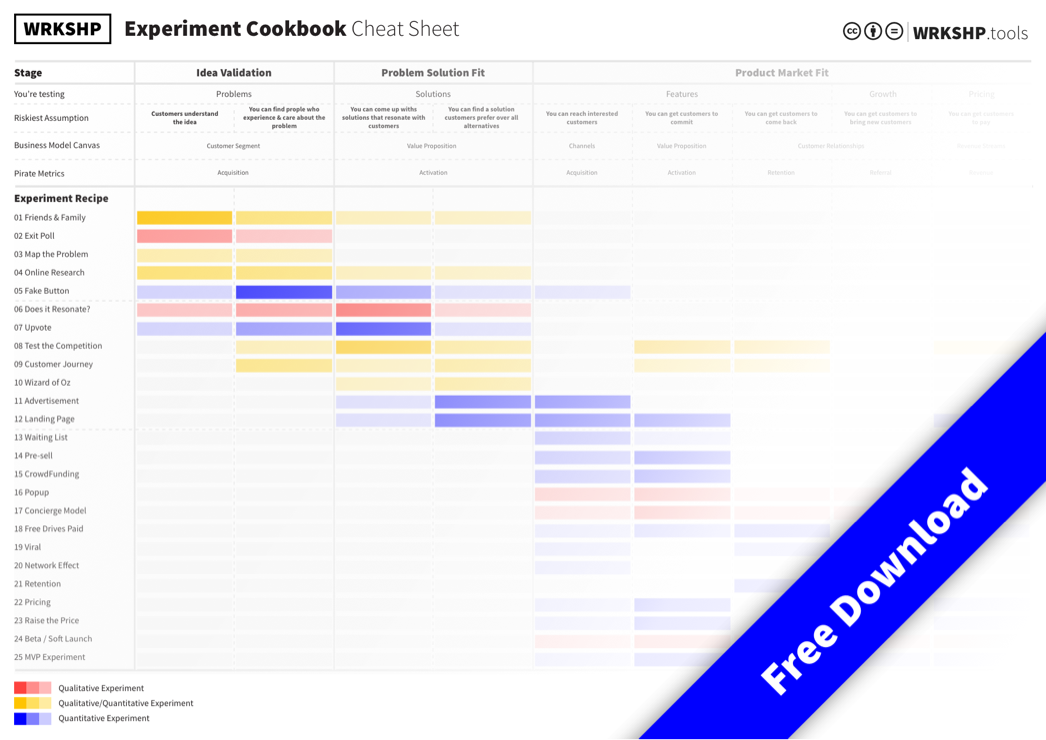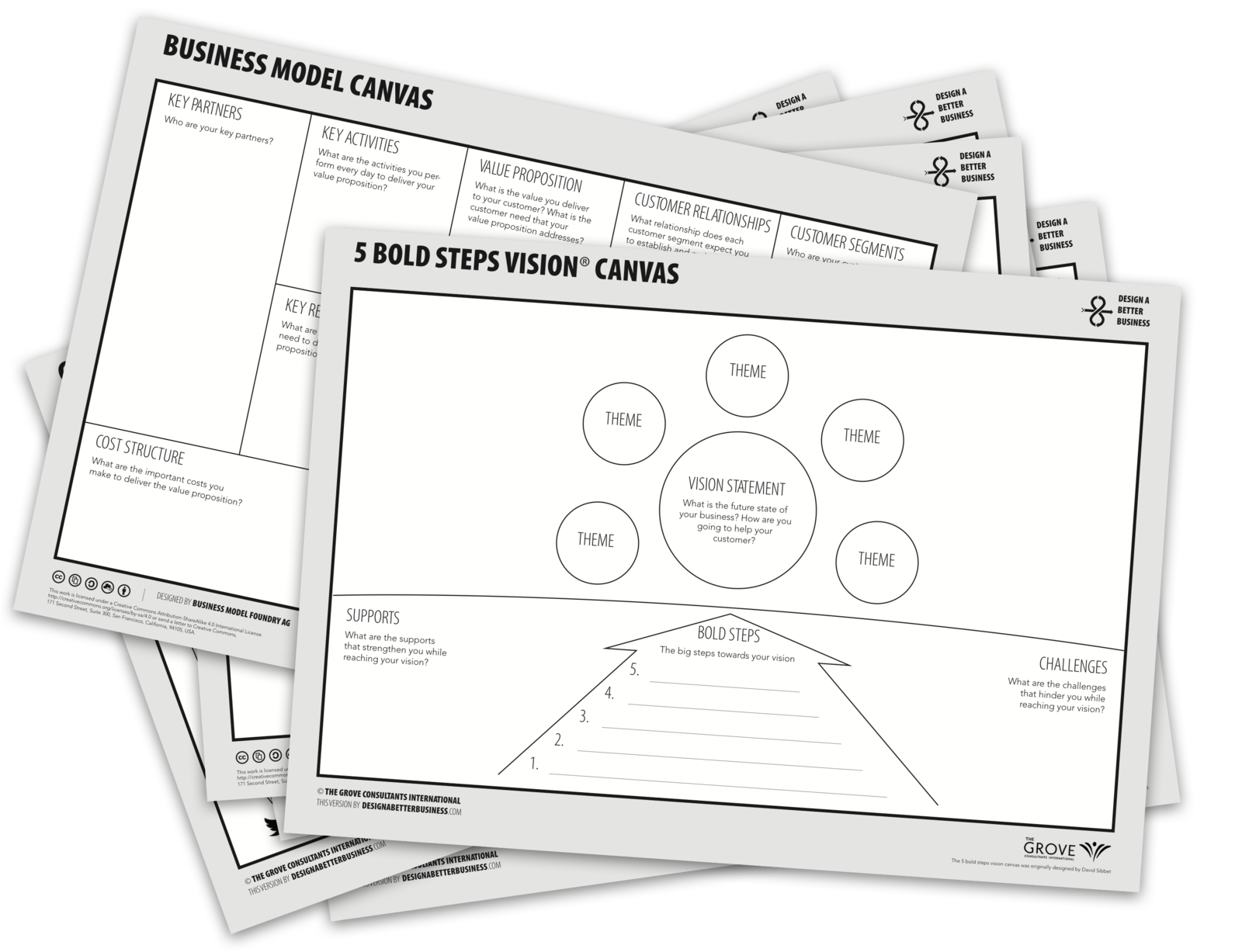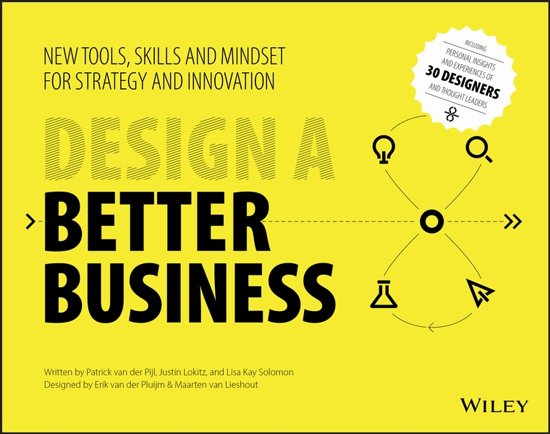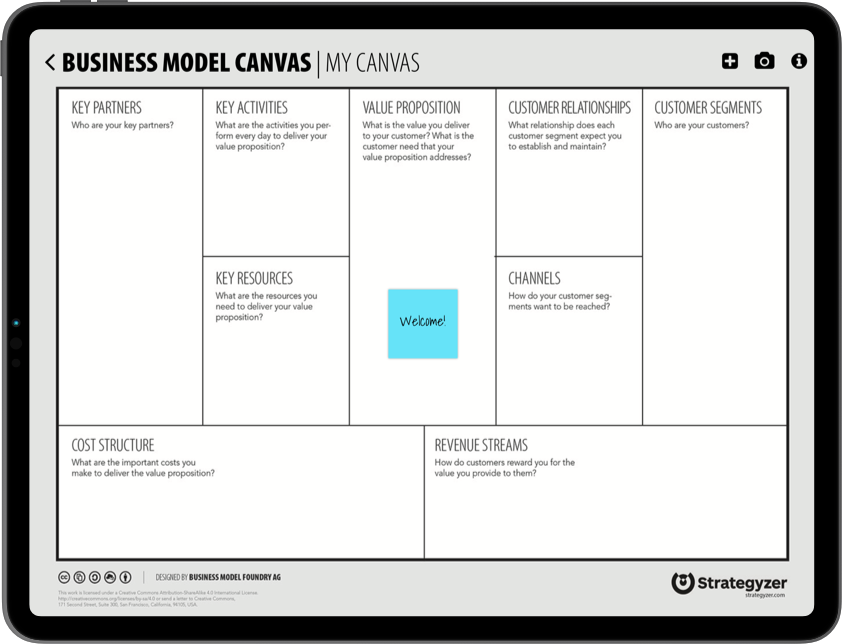A free overview of 25 Validation Experiment Recipes from WRKSHP.tools.
Persona Canvas
Introduction
The persona canvas can be used to give a customer segment a face and name and make it easier to step into the shoes of the customer. Personas make talking about customers and their characteristics more tangible and concrete, and make it easier to refer back to a pattern of characteristics. Personas make it possible to create and share mental models and have a common language about several customer types.
Overview
| Time | ± 30 minutes |
| Difficulty | 5 / 5 |
| People | 3 - 5 |
| Author | Design A Better Business |
| Copyright |
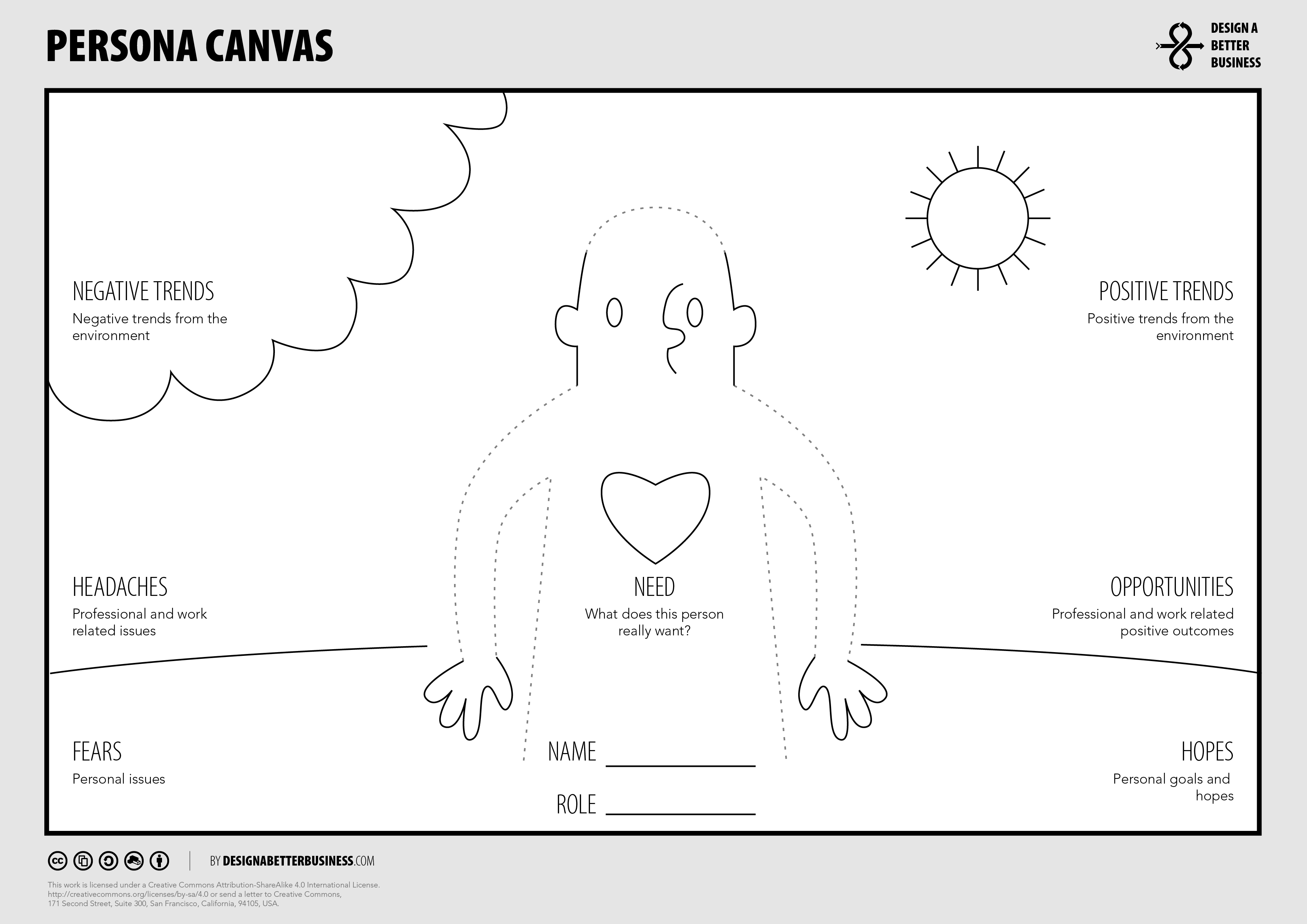
How To Use the Persona Canvas
If you have ever worked with design or designers, chances are that you have seen multiple varieties of personas being used to get a grip on who a customer or user is. This canvas helps you to build your own personas.
Tool Overview

Name & Role Giving your persona a real name and role helps anchor them in reality. Using a real person is even better.
Outlines The canvas is designed to make it easy for you to draw what your customer looks like on top of it. Is it a man? A woman? Is he or she happy? Or sad? Do they wear specific clothes? Make a rich picture.
Need In the end, we want to try to identify needs for the persona. What do they really want? What decisions will they take? The rest of the canvas helps to zoom in
Positive Trends What are positive trends the persona experiences in their life?
Opportunities What are positive opportunities the persona experiences in their life? These could be in work, or private life.
Hopes What hopes does the persona have for the future?
Negative Trends What are negative trends the persona experiences in their life?
Headaches What are negative headaches the persona experiences in their life? These could be in work, or private life.
Fears What fears does the persona have for the future?
Step-by-step guide
1 Before you start
Arrange for a comfortable environment. Definitely not a meeting room. Create a creative athmosphere and have plenty of colorful materials and magazines at the ready.
Tip! Start by defining name, age, gender, role and other outward characteristics, and draw the image of the persona. This will help you generate more information.
Checklist
- Arrange a relaxed, positive and private environment
- Have markers (fine tip) and paper for everybody
- Print or draw the canvas on a big sheet of paper
- Have plenty of sticky notes and markers ready
- Allow yourself 45 minutes of undisturbed time
2 Fill out the Persona
Fill out the persona with your team. Try to come up with things that your persona experiences, and discuss what they might feel about the experience. What will their response be? The persona works very well with the customer journey canvas in that way. Try to be specific, and selective.
3 Hacks: More uses for the Persona Canvas
The persona canvas helps you focus more on the mental model you have of a person or group of people – the picture of the persona that you share as a team. Making it visual makes sure everyone has the same picture. And you can use it to create a mental model or profile of ANY person or group!And when you know that, it is clear that persona’s can be used for many more things that are now left to chance or long discussions.
Example Three examples of how to use the Persona Canvas
4 Hack: Use the Persona Canvas to Prepare for a Meeting
Prepare your next meeting by mapping out the personas for the important stakeholders. What are their hopes, their fears? Why are they in the discussion? What are they like? You could spend time before the meeting to figure out if your assumptions are correct, talking to others or the stakeholders themselves. During the meeting, make sure to take notes and update your map afterward.
5 Hack: Use the Persona Canvas for Storytelling
When you are creating a story you can use the template to map your audience(s) and what their perspective is. Why would they want to hear your story?
6 Hack: Use the Persona Canvas to Build Your Team
Get to know your team! Have the people in your team make personas of themselves and the others in the team, and compare them. Ask for at least one surprising element to go beyond the businesscard level.
7 Check your Persona
Checklist
- Do you have a role and name for your persona?
- Did you create a rich picture?
- How much of what is on the canvas is still an assumption?
- What is the 'core' of your persona? what do they need?
8 Next Steps
Once you filled your persona, it's time for the next step. If you started from scratch, to get your first assumptions on paper, it's now the time to go out and find evidence that your persona actually connects to real-world people.
Checklist
- Go out of the building and talk to (potential) customers. Does what they say resonate with your persona? Or do you need to update it?
- Use the persona as the basis of a customer journey
- Use the persona as the basis of a value proposition canvas
Design A Better Business Newsletter
Sign up for the Design A Better Business Newsletter and keep up to date with events and news!
